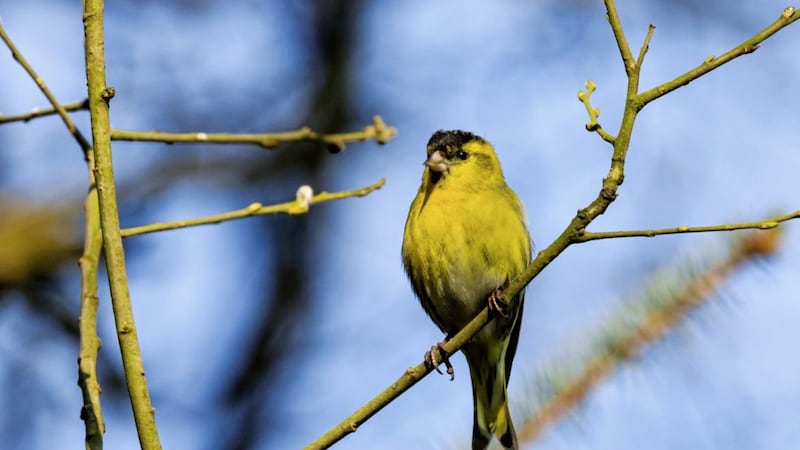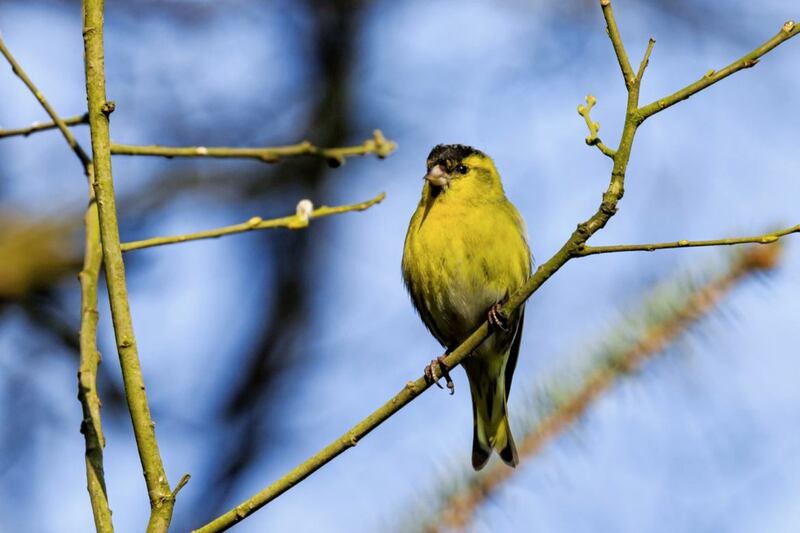ALTHOUGH today we’re on the eve of the start of meteorological winter, December 1, the leafless boughs and hard frosts of late along with the haunting calls of whooper swans from night skies suggest we’ve already been under winter’s influence for some time.
Perhaps our Celtic ancestors had a more intuitive sense for the timing of transition to winter, when at their festival of Samhain on All Hallows’ Eve, they celebrated the gateway to winter a month earlier, with their community bonfires and general mischief making.
This view was reinforced for me by the early visit of some Siskins to my peanut and nyjer seed feeders. Carduelis spinus, usually comes to gardens much later in winter when its natural food of pine and alder cone seed has run out.
19th Century Belfast naturalist and ornithologist, William Thompson in his four volume work, The Natural History of Ireland (1849 to 1851, 1856) described the siskin as "an occasional winter visitant" at that time, but by the 1900s the species was known to be breeding in counties Waterford, Wexford and Wicklow with their range gradually spreading west to Galway and Roscommon and northwards to Tyrone and Donegal. Reports also suggest that around then in Down and Armagh the bird was often taken from nests and kept as a cage bird.
Their increased numbers and breeding range both in Ireland and Britain is linked to the spread of conifer plantations where they find suitable nesting sites and food. In more recent decades, siskins have learnt to exploit garden feeders during winter, providing them with nutritious supplementary food when numbers are swelled by additional birds arriving from the continent.
One of our smallest finches, the siskin has a fine, pointed bill and deeply forked tail, easily seen in flight. Its plumage is predominately a yellow-green colour with a bright yellow band on the wing and yellow patches at the base of the tail. Adult males have a distinctive black crown and black on the wings, while the female is much greener in colour, streaked above and lacking the black crown.
Various names have been given to the siskin such as 'Black-headed goldfinch', which references its larger colourful cousin and the 'Barley bird'. Charles Swainson in Provincial Names and Folk Lore of British birds (1885) says the once commonly used name Aberdavine means 'alder finch', pointing to its fondness for alder seeds, something also noted in one of its Irish names, 'Gealbhan fearnóige', meaning 'alder sparrow'.
Píobaire, meaning 'piper', is another Irish name for the bird, a reference to its twittering song and call. German and Swiss legend tells of how siskins guard a magic stone in their nests making them invisible to predators. Other cultural links with the bird include the use of its image on postage stamps in Poland and Belgium and also its role in a children’s Czech folk song and dance with the title Siskin, O Little Siskin where the bird is the source of lore and knowledge on how the poppy flower is properly sown and grown.
Come the spring, the female siskin will build her nest high in the cover of a conifer tree, built from twigs covered with lichen and lined with feathers, hair and fine roots. Richard Ussher writes in his Birds of Ireland (1900): "In the breeding time the siskin is the most joyous of birds, seeming to bound through the air with a cry of delight, and to proclaim its feelings with every note and movement"’.
For now, however, I’m happy to enjoy the winter company of this most joyous bird.



